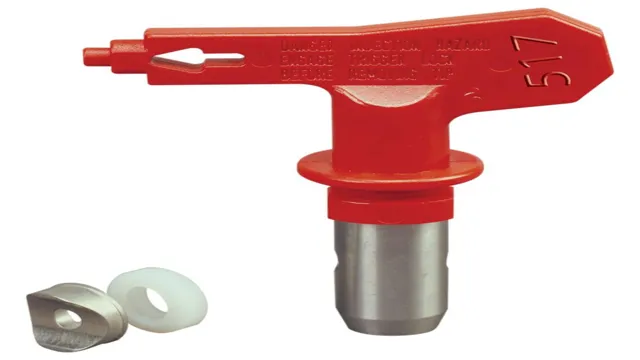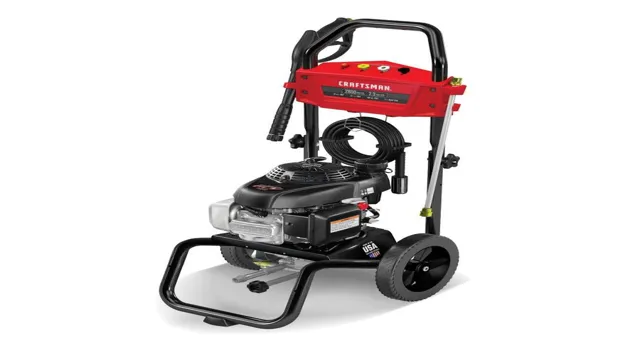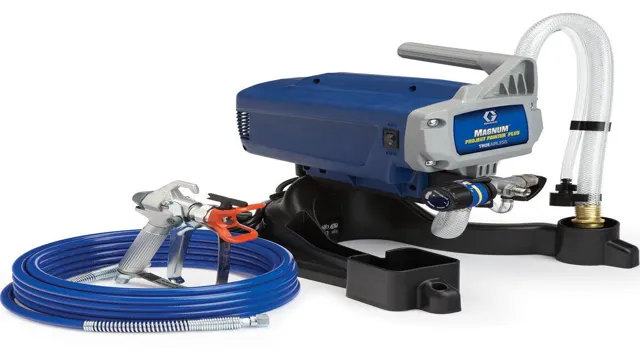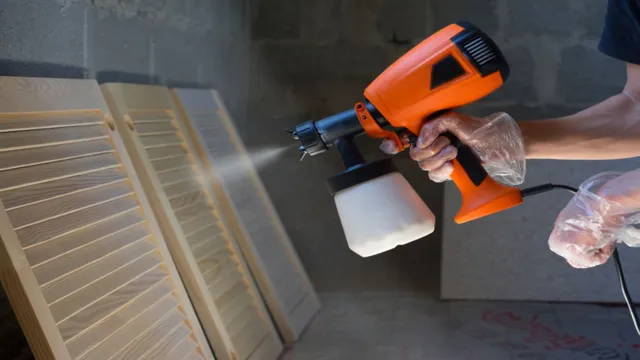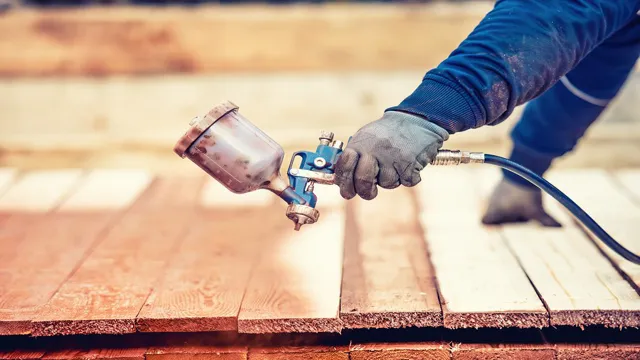Can You Use a Paint Sprayer with Oil Based Paint Successfully? Tips and Tricks.
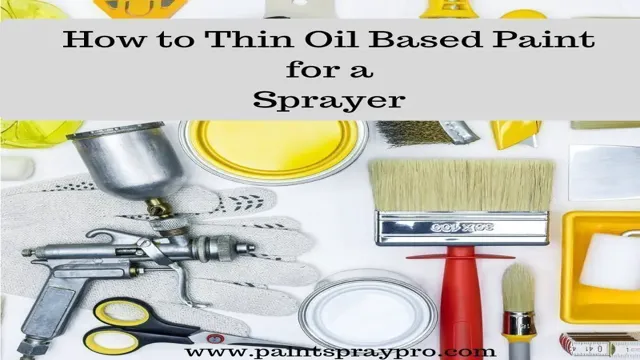
Are you a DIY enthusiast looking at refurbishing your furniture or giving your walls a new coat of paint? If so, using a paint sprayer is an excellent way to make your job easier and faster. If you’re using oil-based paint, it’s important to know how to use a paint sprayer with it. Oil-based paint is thicker than latex paint, and it requires special equipment to apply it correctly.
Painting with a brush or a roller can be a challenging and time-consuming task, and it’s difficult to achieve an even coat. A paint sprayer is a great tool to use for oil-based paint because it can quickly apply a smooth, even coat without creating brush marks or leaving roller fibers behind. In this blog, we’ll discuss how to use a paint sprayer with oil-based paint so you can get professional-looking results.
Understanding Oil Based Paints
Can you use a paint sprayer with oil based paint? The answer is yes, but it can be a bit more challenging than using a paint sprayer with water-based paint. Oil based paints are thicker and stickier, and they require thinner coats for proper application. This means that you may need to thin your oil-based paint before you can use it in a paint sprayer.
Additionally, it is important to thoroughly clean your paint sprayer after using oil-based paint to prevent the paint from clogging the nozzle or other parts of the sprayer. Despite these challenges, many professional painters and DIY enthusiasts prefer to use a paint sprayer with oil-based paint because of its durability and glossy finish. If you decide to use a paint sprayer with oil-based paint, be sure to take extra precautions to protect yourself from fumes and use proper ventilation.
Chemistry of Oil Based Paints
Oil-based paints are a common choice among DIY enthusiasts and professional painters alike due to their durability and versatility. Understanding the chemistry behind these paints can help you achieve better painting results. Oil-based paints are composed primarily of linseed oil, resin, solvents, and pigments.
The linseed oil acts as the binder, holding together all the other ingredients. The resin helps to improve the paint’s gloss and its resistance to damage from environmental factors like water and sunlight. Solvents, such as mineral spirits, dissolve the resin and help make the paint easier to apply.
And finally, pigments are added to give the paint its color. Mixing these ingredients together creates a thick, creamy consistency that can be applied to a variety of surfaces, including wood, metal, and masonry. Nonetheless, it’s worth noting that oil-based paints are not eco-friendly since they release volatile organic compounds into the environment, making them unsuitable for areas with poor ventilation.
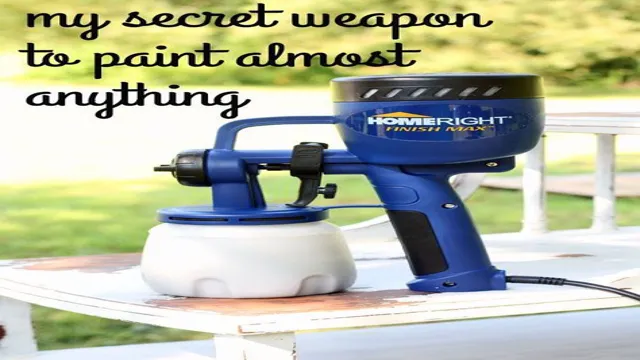
Pros and Cons of Using Oil Based Paints
Oil-based paints are a popular choice for many homeowners and professionals due to their durability, smooth finish, and ability to cover imperfections. However, they do come with some disadvantages. First and foremost, they take a long time to dry, which can be frustrating for those who need quick results.
They also have a strong odor and require mineral spirits for cleanup, which can be harmful to the environment. On the other hand, oil-based paints are resistant to staining and damage from water, which makes them ideal for high-traffic areas like kitchens and bathrooms. They also tend to have better leveling properties, meaning that they spread evenly and result in a smooth finish.
Overall, the decision to use oil-based paint should be based on the specific project and personal preferences. It is important to consider the benefits and drawbacks before making a final decision.
Using a Paint Sprayer with Oil Based Paints
Yes, it is possible to use a paint sprayer with oil based paints after ensuring that the sprayer is compatible with such paints. Unlike water-based paints, oil based paints are thicker and require larger spray tips to avoid clogging. Also, you need to follow the manufacturer’s instructions and dilute the paint to the recommended consistency before using it with the sprayer.
Additionally, you should wear protective gear, such as a mask and gloves, to avoid inhaling the fumes or exposing your skin to the paint. Using a paint sprayer with oil based paints can save you time and effort, especially when painting large surfaces, but make sure to invest in a quality sprayer and follow the proper safety measures.
Preparation
Preparation is key when using a paint sprayer with oil-based paints. You’ll need to make sure that the surface you’re painting is clean and free of any debris or dust, as well as primed with an oil-based primer. It’s also important to check that your paint sprayer is compatible with oil-based paints.
This may involve purchasing a specific type of sprayer or nozzle, or cleaning your existing sprayer thoroughly before use. Once your surface is prepped and your sprayer is ready, mix your oil-based paint thoroughly and strain it before pouring it into the sprayer’s container. Always test your sprayer on a small, inconspicuous area before beginning to paint your entire surface.
By taking the necessary steps to prepare your surface and equipment, you’ll ensure a clean, even finish that will last for years to come.
Type of Paint Sprayer to Use
When it comes to using an oil-based paint with a paint sprayer, it’s important to choose the right type of sprayer to ensure a successful and hassle-free project. Airless paint sprayers are typically the best choice for oil-based paints, as they can handle the thicker consistency of the paint without clogging or slowing down. Additionally, be sure to use a sprayer with a larger tip size to accommodate the thicker paint, and thin it out slightly if necessary to achieve a smooth finish.
Remember to always wear protective equipment, such as goggles and a respirator, when using a paint sprayer with any type of paint to avoid inhaling harmful fumes. With the right tools and precautions, using a paint sprayer with oil-based paints can result in a beautiful and long-lasting finish.
Thinners and Cleaners
If you’re planning on using a paint sprayer with oil-based paints, it’s essential to be mindful of the thinners and cleaners you use. Firstly, it’s essential to use a thinner that’s specifically designed for oil-based paints since traditional water-based thinners won’t break down the oil-based paint properly. Additionally, oil-based paints require a specialized cleaning solution to thoroughly clean your paint sprayer after use.
One great option is to use a mineral spirit-based cleaner which is effective at cleaning paint sprayers without damaging the equipment. Remember to always follow the manufacturer’s instructions for both the thinners and cleaners you’re using and dispose of any leftover solutions properly. By taking these small steps, you can ensure that your paint sprayer remains in excellent condition and lasts for years to come while achieving an excellent finish.
Tips for Spray Painting with Oil Based Paints
Spray painting with oil-based paints can be a bit tricky, but it’s definitely possible to do it with a paint sprayer. Here are some tips to keep in mind when using oil-based paints with a sprayer: Firstly, make sure to use the right type of spray gun for oil-based paints, as they require a different type of sprayer than latex paints. Secondly, don’t forget to thin the paint before using it with the sprayer.
This will make the paint easier to spray and will help to avoid any clogs or spitting that can occur with thicker paint. Additionally, be sure to wear protective gear while spraying, such as a respirator to avoid inhaling any fumes. Finally, clean the sprayer thoroughly after use to avoid any damage or clogging.
Overall, with the right equipment and precautions, using a sprayer with oil-based paints can result in a beautiful, uniform finish that is perfect for any DIY project.
Maintain the Right Pressure
When it comes to spray painting with oil based paints, maintaining the right pressure is crucial for achieving optimal results. You don’t want the pressure to be too high or too low as this can result in an uneven finish or overspray. The ideal pressure setting will depend on the specific paint and equipment being used, so it’s important to follow the manufacturer’s recommendations.
In general, it’s best to start with a lower pressure and gradually increase it until you achieve the desired coverage and finish. It’s also important to keep the nozzle at the correct distance from the surface being painted and to move it consistently to avoid blotches or streaks. By experimenting with pressure and technique, you can achieve a professional-looking finish that will last.
Spray Evenly
When it comes to spray painting with oil-based paints, one of the most important tips to keep in mind is to spray evenly. This means that you need to maintain a consistent distance between the spray nozzle and the surface you are painting, keeping it parallel to the surface at all times. This will help ensure that the paint is applied in a smooth and even manner, preventing drips, blotches, and other imperfections.
It’s also a good idea to move the spray nozzle in a slow and steady motion, using overlapping strokes to cover the entire surface. This will help ensure that you get full coverage without any bare spots. Remember, spraying evenly takes practice, so start with smaller surfaces and work your way up to larger ones to build your skills.
With time and patience, you’ll be able to create professional-looking finishes that will last for years to come.
Cleaning Up after Spray Painting
When it comes to spraying oil-based paint, many people wonder if they can use a paint sprayer for the job. The short answer is yes, but there are some important things to keep in mind. First, you’ll need to make sure the paint sprayer you’re using is compatible with oil-based paints.
Not all sprayers are, so be sure to read the manufacturer’s instructions carefully before you get started. Additionally, oil-based paints can be messy and difficult to clean up, so it’s important to take extra precautions to protect your work area and clean up properly when you’re finished. This may include using drop cloths, wearing protective clothing, and using specialized solvents or cleaners to break down the paint residue.
Overall, spraying oil-based paint can be a great way to achieve a smooth, even finish, but it does require some extra care and attention to ensure the best possible results.
Cleaning the Sprayer
Cleaning your sprayer after spray painting is an essential step to maintain its longevity and performance. Neglecting to do so can lead to clogs, uneven spray patterns, and other issues that compromise the quality of your work. To start, remove the spray tip and nozzle, and rinse them with water to remove any leftover paint.
Then, fill a bucket or container with warm water and a cleaning solution, such as mineral spirits or paint thinner. Submerge the sprayer’s parts into the solution, and let them soak for several minutes. Use a soft-bristled brush to scrub away any remaining paint or residue, and rinse the parts thoroughly with water.
Finally, reassemble the sprayer and run clean water through it until it sprays clear. By doing this, you can keep your sprayer in optimal condition and ensure that your next painting project goes smoothly. Keyword: Spray painting, Cleaning, Sprayer.
Disposing of Leftover Oil Based Paints Safely
If you’ve ever used oil-based paint, you know just how challenging it is to clean up after your project is complete. Not only is it messy, but it can also present a significant hazard if not disposed of correctly. The first step in cleaning up after spray painting is to ensure that you’ve protected your work area thoroughly.
Wipe up any drips or spills and dispose of them safely, being careful not to let them come into contact with any water sources. You should also dispose of any used paint filters and cleanup materials in a hazardous waste container. When washing equipment, use a solvent that’s safe for the type of paint you used and dispose of the dirty solvent in the same way as the paint.
Remember, it’s vital to take the necessary precautions when cleaning up after oil-based paints to keep yourself and the environment safe.
Conclusion
In conclusion, the answer to the question of whether you can use a paint sprayer with oil based paint is yes, but with a few considerations. Just like oil and water don’t mix, oil based paint requires a different type of sprayer than water based paint. So, be sure to choose a sprayer specifically designed for use with oil based paints.
And just like a chef needs the right ingredients to make a delicious dish, you’ll need to choose the right combination of paint and sprayer to get the best results. So, happy painting and don’t be afraid to get a little oily!”
FAQs
Is it possible to use a paint sprayer with oil-based paint?
Yes, you can use a paint sprayer with oil-based paint but make sure to use the appropriate tip size and pressure setting.
Can any paint sprayer be used with oil-based paint or are there specific types?
Not all paint sprayers can handle oil-based paint. Look for a sprayer that is specifically designed for thicker and heavier coatings.
Would you need to thin the oil-based paint before using it in a sprayer?
Depending on the sprayer and the viscosity of the paint, it may need to be thinned. Consult the manufacturer’s instructions for more specific guidance.
What are the advantages of using a paint sprayer for oil-based paint?
Paint sprayers provide even and consistent coverage, reduce overspray, and can help complete a task more efficiently.
What safety precautions should be taken when using a paint sprayer with oil-based paint?
Always wear respiratory and eye protection when using a sprayer, and make sure to properly ventilate the area. Also, follow the manufacturer’s instructions and warnings.
Can a novice painter use a paint sprayer with oil-based paint?
With proper guidance and practice, novice painters can use a paint sprayer with oil-based paint. However, it may be helpful to seek advice from a professional or attend a class.
How can you clean a paint sprayer after using oil-based paint?
Use the appropriate cleaning solution recommended by the paint sprayer’s manufacturer, and follow the instructions carefully. Cleaning the sprayer thoroughly will extend its lifespan and prevent clogging.

